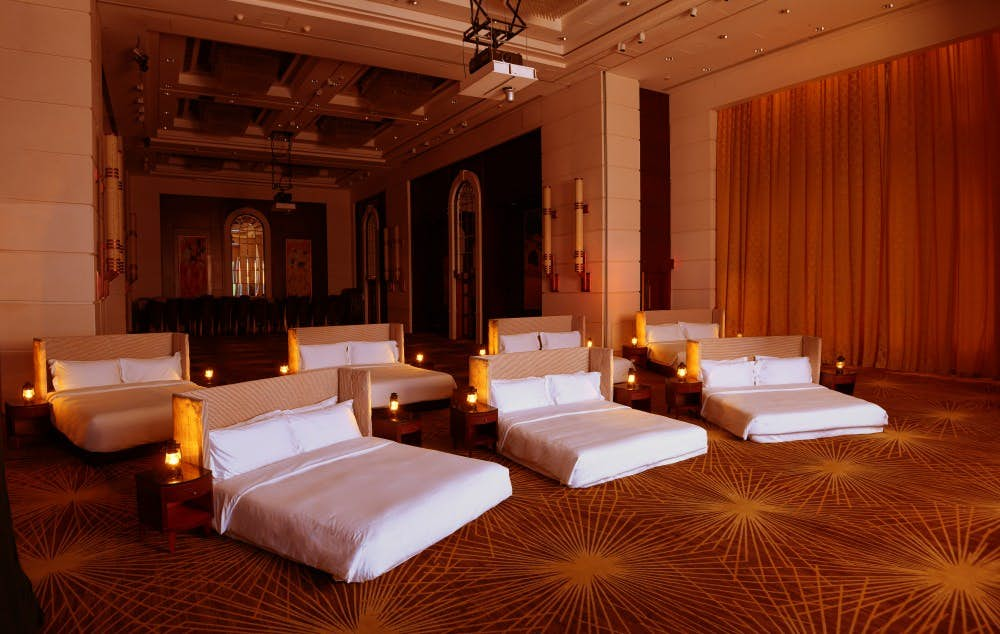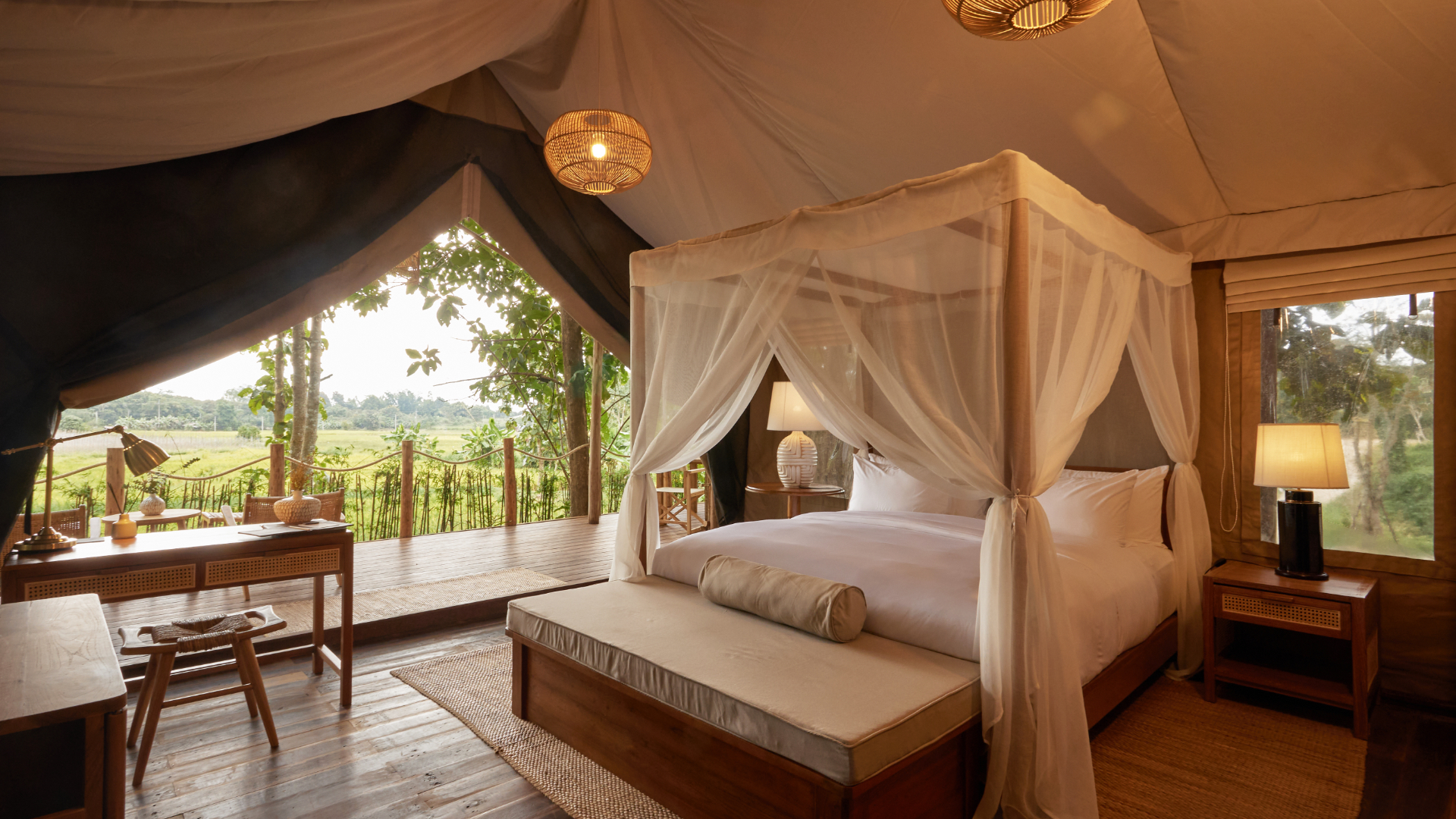Ice Age
Jade Dragon Snow Mountain,
Yunnan Province, China
WHAT MAKES IT SPECIAL?
This is a mountain range located 15km north of Lijiang in the northwest of China’s Yunnan Province. Its 13 peaks, which have altitudes of at least 4,000m, are covered by snow all year-round.
The Jade Dragon Snow Mountain is called the “Natural Glacier Museum” as it has all types of glaciers. Sadly, the current global warming has caused the glaciers to shrink and four of the orginal 19 glaciers have already disappeared.
Look down from the mountaintop and you can see rivers and pools, which are formed by the thawed snow water running along the valley and through the forests.
Jade Dragon Snow Mountain shelters one fourth of all plant species in China and the mountain’s 20 primeval forests offer sanctuary to 400 types of rare trees and 30 kinds of rare animals which are protected by the state.
WHAT CAN I DO THERE?
In 2005, one of the rocky cliffs of the mountain became the natural stage for Impression Lijiang, a unique outdoor cultural performance conceptualised by the famed Chinese film director Zhang Zimou. At 3,100m above sea level, it is the highest performance site in the world.
For this production, Zhang Yimou used over 100 horses and employed 500 local people from 16 different towns and villages. Important also to note is that the cast was selected from 10 different ethnic minorities living in the area.
The show is a series of six musical and dance numbers depicting scenes in the daily life of the Naxi and Musuo people.
The show is mounted in daylight with no special lights and sounds effects. But the colourful costumes and the energy of the performance itself more than make up for this. Corporate groups can buy out an entire performance for an exclusive staging.
BEST TIME TO VISIT?
Winter is normally mild, dry, and the sunniest time of the year, with a high of 14.8°C, but due to the aridity this time of year, lows often fall between 3°C and 6°C.
CONTACT
tel: 86 0888 888 8888

Chamber Music
Jenolan Caves, Blue Mountains, New South Wales, Australia
WHAT’S IT LIKE?
A mere three hours from Sydney, the Blue Mountains stretch over one million hectares and feature an inspiring mix of rainforest, canyons, tall forests and heathlands. The mountains reach a height of 1,100m. It was once believed to be an impassable barrier and early European settlers even thought China lay on the other side. The place took its name from the blue haze that hovered above the mountains produced by the oil from the plentiful eucalyptus trees. It combines eight individual conservation reserves – Yengo, Wollemi, Gardens of Stone, Blue Mountains, Nattai, Kanangra Boyd, Thirlmere Lakes and Jenolan Caves Karst Reserve.
WHAT CAN I DO THERE?
No shortage of high-altitude activities here, but for those afraid of heights, Blue Mountains has an extensive cave network waiting to be explored. At Jenolan Caves choose from 11 spectacular show caves. Don a hard hat and try adventure caving. For a truly unique experience, time your visit to coincide with one of the underground concerts that are regularly staged throughout the year. Lucas Cave, discovered in 1860, has good natural acoustics. The 50m-high Cathedral Chamber, the highest chamber within the Lucas Cave, is the venue for monthly cello and Gypsy music concerts, as well as other concerts, including one by local band Didgeridoo Dingo.
BEST TIME TO VISIT?
All-year round
CONTACT
tel: 61 2 6359 3911, press 1

Lake Cruise
Lake Toba, North Sumatra, Indonesia
WHAT MAKES IT SPECIAL?
Located 900m above sea level, Lake Toba in North Sumatra is a crater lake with an island almost the size of Singapore at its centre. The lake is known for its scenic beauty. It holds two global distinctions as the largest volcanic lake at 1,145sqm and the 14th deepest lake in the world with its depth of 505m. The cool temperature ranging between 20°C and 30°C provides groups a refreshing escape from the heat of the city.
WHAT CAN I DO THERE?
The small town of Parapat at the edge of Lake Toba has facilities for waterskiing, canoeing and fishing to name a few. But nothing beats the experience of cruising around the lake itself, capped by a few hours’ visit to Samosir Island located in the middle of the lake.
Samosir Island was the original home of the ethnic Batak Toba tribe whose descendants now primarily live in the lands across the water. History and culture buffs in your group can enjoy the tactile heritage of this ancient people: the stone furniture in Ambarita Village, the long house of the Toba Batak King in Simanindo Village that is now a museum, and the carved wooden statues in an ancient gravesite in Tomok Village.
Also, a traditional dance performance by local villagers can be arranged.
If you can resist the relaxing effect of cool mountain air, challenge your group with a trek to the central highlands to admire the rugged topography.
BEST TIME TO VISIT?
Lake Toba enjoys sunny weather year-round. But you might want to skip the wet season between October and February, which is marked by short, occasional rain in the evening.
CONTACT
email: web@janstours.com

Ziptrek Adventure
Bob’s Peak, Queenstown, New Zealand
WHAT MAKES IT SPECIAL?
Reach the top of Bob’s Peak via a cable car ride locally known as the Skyline Gondola. The ride is said to be the steepest lift in the Southern Hemisphere as the cable car rises in an average incline angle of 37.1 degrees. The top terminal sits 790m above ground. A must-see attraction, Bob’s Peak provides the best panoramic views of Queenstown.
WHAT CAN I DO THERE?
From there, try out the latest craze in town – zipping. What’s unique is that your group zip down from tree to tree. This is a two-hour flying fox journey through the forest canopy. From the Skyline Gondola, check in at the Ziptrek Guest Services tree before stepping off architecturally designed aerial launch platforms made out of Macrocarpa timber. Between the four flying foxes, Ziptrek guides deliver an interpretive talk with an ecological focus and informative facts on the local area. The zip tour can be taken by groups between two and 10 people. Large groups can be divided to take the zip tour 20 minutes apart.
BEST TIME TO VISIT?
All year-round
CONTACT
email: nzinfo@ziptrek.com
Open Field Picnic
Mai Chau, Hoa Binh Province, Vietnam
WHAT MAKES IT SPECIAL?
Some 135km from Hanoi, it only takes a three-and-a-half hour drive to reach the mountain valley of Mai Chau. With karst rock formations and rice terraces as far as the eye can see, it is inhabited by local minorities who still hold many traditional practices of their ancestors. Most people here are ethnic White Thai, distantly related to tribes in Thailand, Laos and China. Often overlooked by visitors making their way to the more popular destination of Sapa, Mai Chau gives a more authentic glimpse into hill-tribe life and offers an opportunity for genuine interaction with local folks.
WHAT CAN I DO THERE?
Groups can opt for a light trek through the hills where guides can point out nearby caves. They can also explore the local village on a bicycle tour and then later arrange lunch in the open paddy fields. During the day, the fresh air and sweeping views are sure to delight, while at night, enjoy traditional dance performances, local food, and overnight stays in village homes or eco-lodges.
BEST TIME TO VISIT?
Between September and May when temperatures are between 15°C and 30°C.
CONTACT
email: go.vietnam@exotissimo.com


